- Nankoweap (mile 53) to Cremation (mile 87) -
Much of the day was spent on the river (7am - 3 pm). For the most part, it was overcast (with bouts of thunder) and not exceedingly hot. The canyon also seemed to widen a bit. We travelled a lot on "high water" so we were able to move quickly and cover a lot of ground... er... water. At mile 61.25, the Little Colorado River (LCR) meets the Colorado River. After this point, our water turned from a bright, clean emerald to a murky, thick chocolate brown. The silty sediment caked on your skin, causing it to dry out and even crack.

The Little Colorado River is one of the larger tributaries of the Colorado River. It is around 315 miles long and provides the principal drainage for the Painted Desert in northern Arizona.


The two rivers meet.

At the Sacred Hopi Salt Mines, water seeping from the walls leaches minerals from the Tapeats Sandstone. These evaporite deposits provide sacramental table salt for Hopi rituals.

Here's our rock layer map again.

A kayaker gives us some scale.

Salt stalactites
The most powerful force to have an impact on the Grand Canyon is erosion, primarily by water (and ice) and second by wind.

Seasonal rains slowly chisel out a new canyon.

Large chunks of rock break off from the cliff wall.
Hance Rapid (a 7-8 on the scale) at mile 76.6 has a 30-foot drop over its run, the largest single drop in the Grand Canyon. Because of this, and the numerous large boulders that the river churns through, most early explorers lined (dragged with rope) or portaged (carried the boat over land) it. Hance is one of three rapids (the other two being Horn Creek and Dubendorff ) that hasn't significantly changed due to debris flows from tributaries since river runners first encountered it in the 19th century.
'Captain' John Hance arrived at the South Rim around 1883 and is reputedly the Grand Canyon's first non-Native American resident. He built a cabin at the trailhead of an old native trail which was to become canyon's first tourist trail. He apparently delighted in telling outlandish stories to visitors, such as how he had dug the canyon himself. He passed away in 1919, the year the Grand Canyon became a National Park.

Scouting the rapid

Pointing out the trouble spots

Whatever these hand gestures mean, they certainly don't look very positive!

Entering the rapid
The canyon offers spectacular, ever-changing scenery.



The canyon walls are impressively tall!

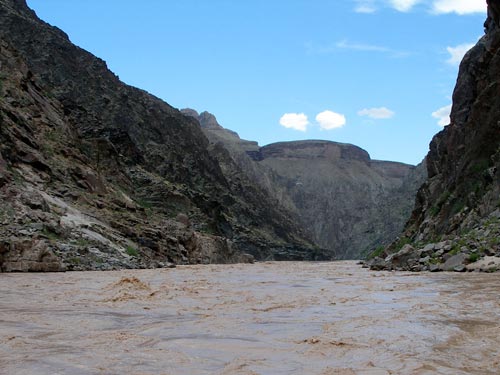

The rocks on these cliffs have been turned almost vertical through fault movements.

The size, shape, color and types of rock differ drastically.


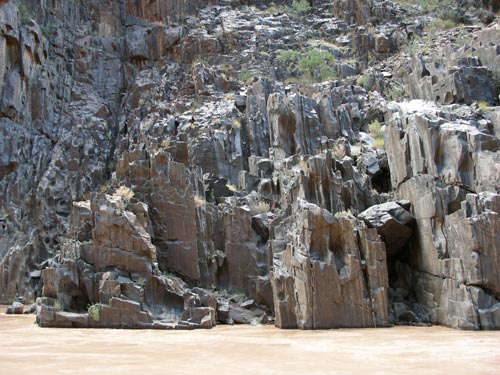




A bloomed Utah Agave (or Century Plant). This member of the Agavaceae family (which includes agave, yucca and Joshua tree) blooms between May - July. Each plant only blooms once between 20 to 40 years of age. Then it dies. The flower stalk can grow to 15 feet in height.

The Great Blue Heron is North America's largest heron. It primarily feeds on small fish.
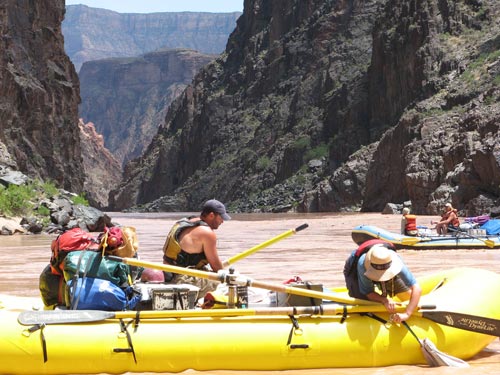
A drag bag sitting in the cold water is an excellent way to chill drinks.

Fighting through the rough water
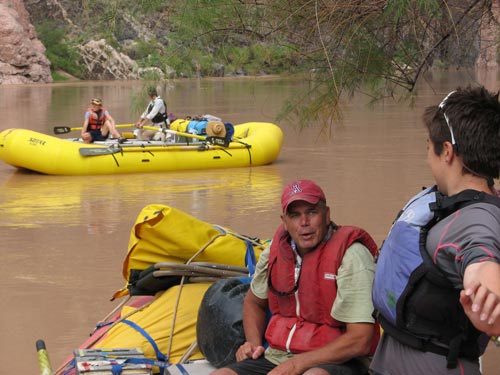
Whew! A moment of relaxation.
We stopped at Cremation Camp (just before Phantom Ranch). The guys strung a ground tarp above the kitchen with the hopes that it would help protect from the hot sun. Unfortunately the walls radiated almost as much heat as the sun did!

Tightening the line

Looking for a safe way down
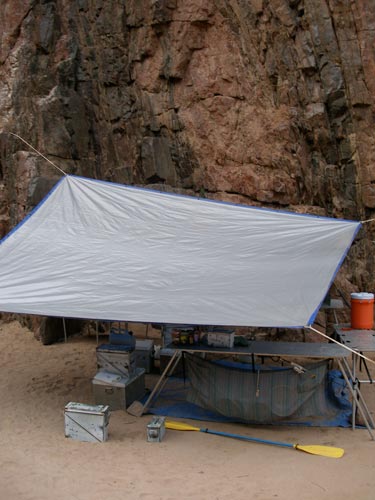
The end result
return • continue

